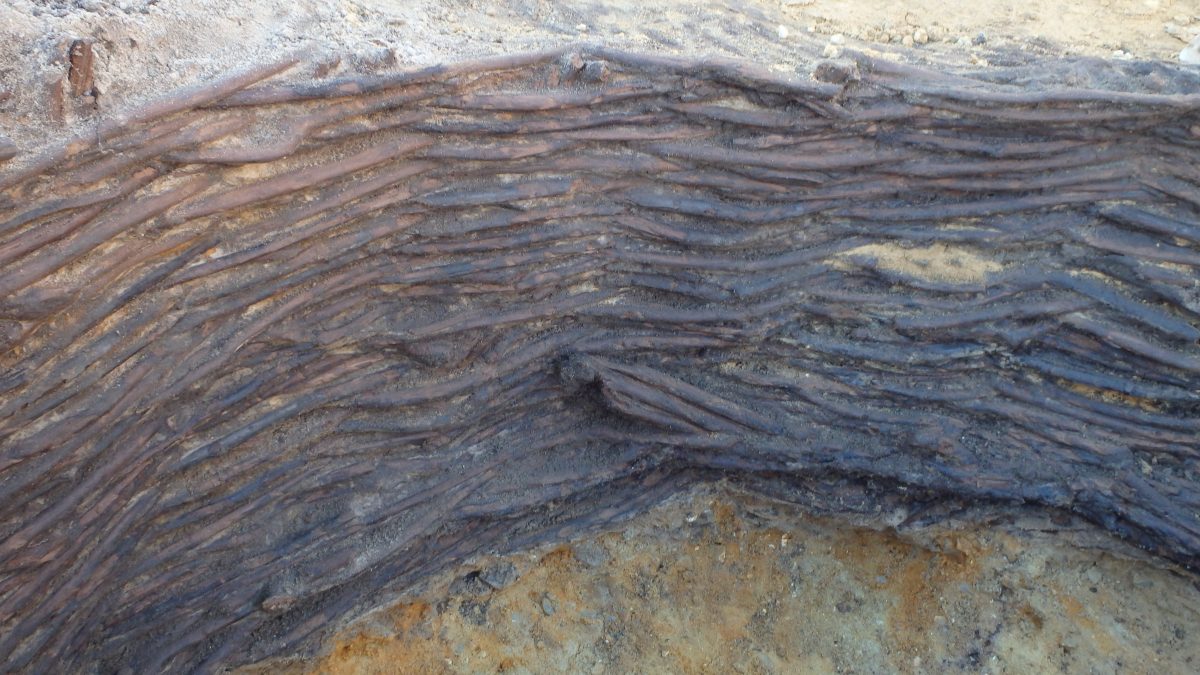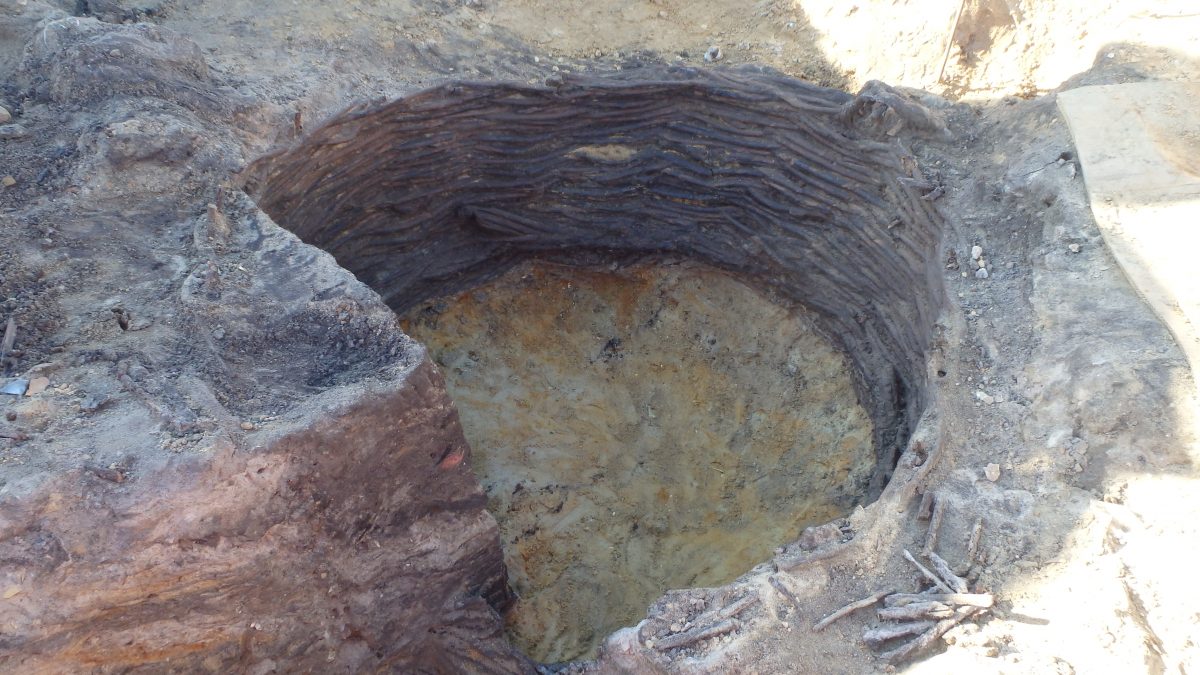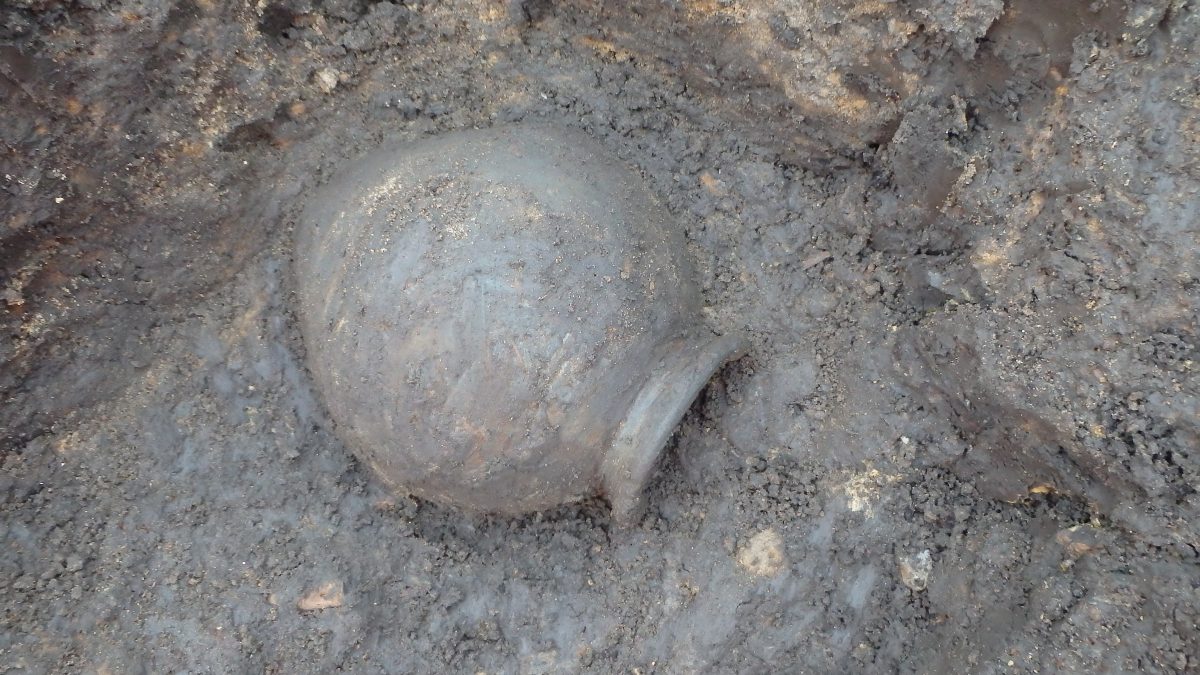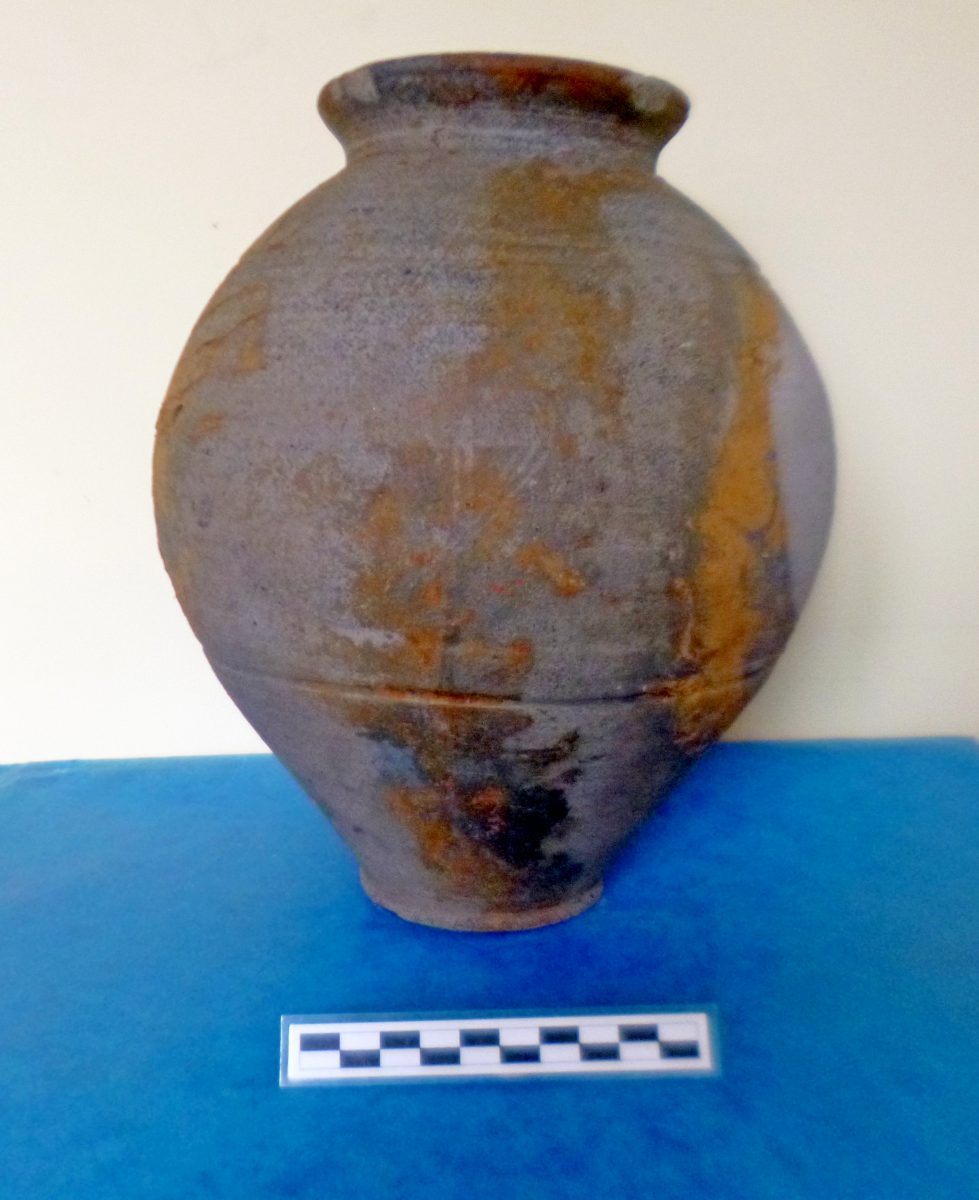Quarry Discoveries
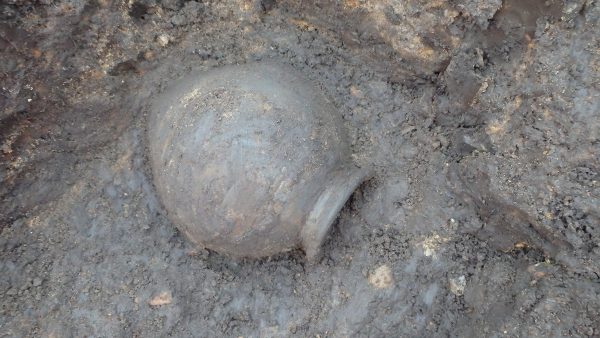
One of our longest projects has been for Aggregate Industries near Woodhall Spa. Here we have been carrying out archaeological investigations in advance of their quarrying work. This has been a fantastic partnership and has produced lots of interesting finds.
One area in particular, however, has caught our attention. When we started, the lack of finds and large number of field ditches found suggested a purely agricultural landscape. However, now we think there might be more to it!
A Roman Farmhouse?
Since late Autumn 2018, this site has been producing a great many artefacts. These include some well-preserved leather and woven wicker work. These may be almost 2,000 years old, dating to the Roman period. The quantity suggests that there was a domestic building or industry taking place nearby. The pattern of field systems around indicate that this was probably the main farmhouse.
The areas producing the most artefacts also had the smallest fields. Farm workers may have put sick, injured or young animals in these fields. Here they could keep a closer eye on them. Alternatively, they may have been where animals were herded to be picked for slaughter or to be sheared.
Unfortunately it seems that the foundations for this farmhouse or villa have already been lost. As such we are keen to speak to speak to people with memories of, photos and records of the land pre-development. It may be that they hold the clue to understanding this landscape further.
This farm may have sold its produce to nearby Horncastle, which was a fortified Roman settlement, or even Lincoln, a Roman Colonia or major settlement where retired soldiers were settled. However it would have been a different landscape to today. Rather than being located far inland, the flooding of the Witham would have placed this settlement on the edge of marshy fenland. However the value of the landscape seems to have been long appreciated, with some of the earlier fields appearing to date to the Iron Age. Indeed, the farmers may have been Iron Age Britons who changed their farming practices to fit with Roman preferences.
Organic Finds
One of the first finds to suggest we had organic preservation on site, was the discovery of a wicker lining to a Roman well – an essential structure if you have livestock onsite. However, the ground was very soft and made the well susceptible to collapse. Our archaeologists found evidence of several attempts to slow the collapse, such as posts driven into the soil around to stabilise it. The wicker lining at the bottom was probably another tactic. The wicker would hold back the soil whilst allowing the water to gather in the middle. However, at some point the wicker gave way and the well started to fill up again. This seems to have been the last straw for the people who worked here. Whether they just left it, dug another one or moved away altogether, we don’t know – but they don’t seem to have repaired it again. Instead farm workers left it to fill, grow peat and seal the wicker work below.
Other organic artefacts found include leather items, including a fragment of a sandal and bucket. A specialist now has to opportunity to examine them and discover more about them.
Pottery
Other finds have included Roman pottery, including grey ware (often used for storage and everyday use) black burnished ware (often used for cooking), mortarium (used to grind down foods for sauces and flavourings), quern stones (used for grinding flour), Samian ware (used for more high status table ware) and amphora (imported storage vessels).
One of our site assistants was very excited to find the best piece of pottery yet from this site just a few weeks ago. They found an entire storage jar at the bottom of another well – there were a few jealous archaeologists in the office that day! All of this tells a story of domestic everyday life, with a big focus on food and cooking, as might be expected from a farm site.
Partnership
Our partnership with the quarry, who have both encouraged and funded the work, has enabled all of this to be found. With their help we have uncovered the story of Woodhall Spa and Kirkby on Bain, and it is our privilege to now tell this story to the local residents.

